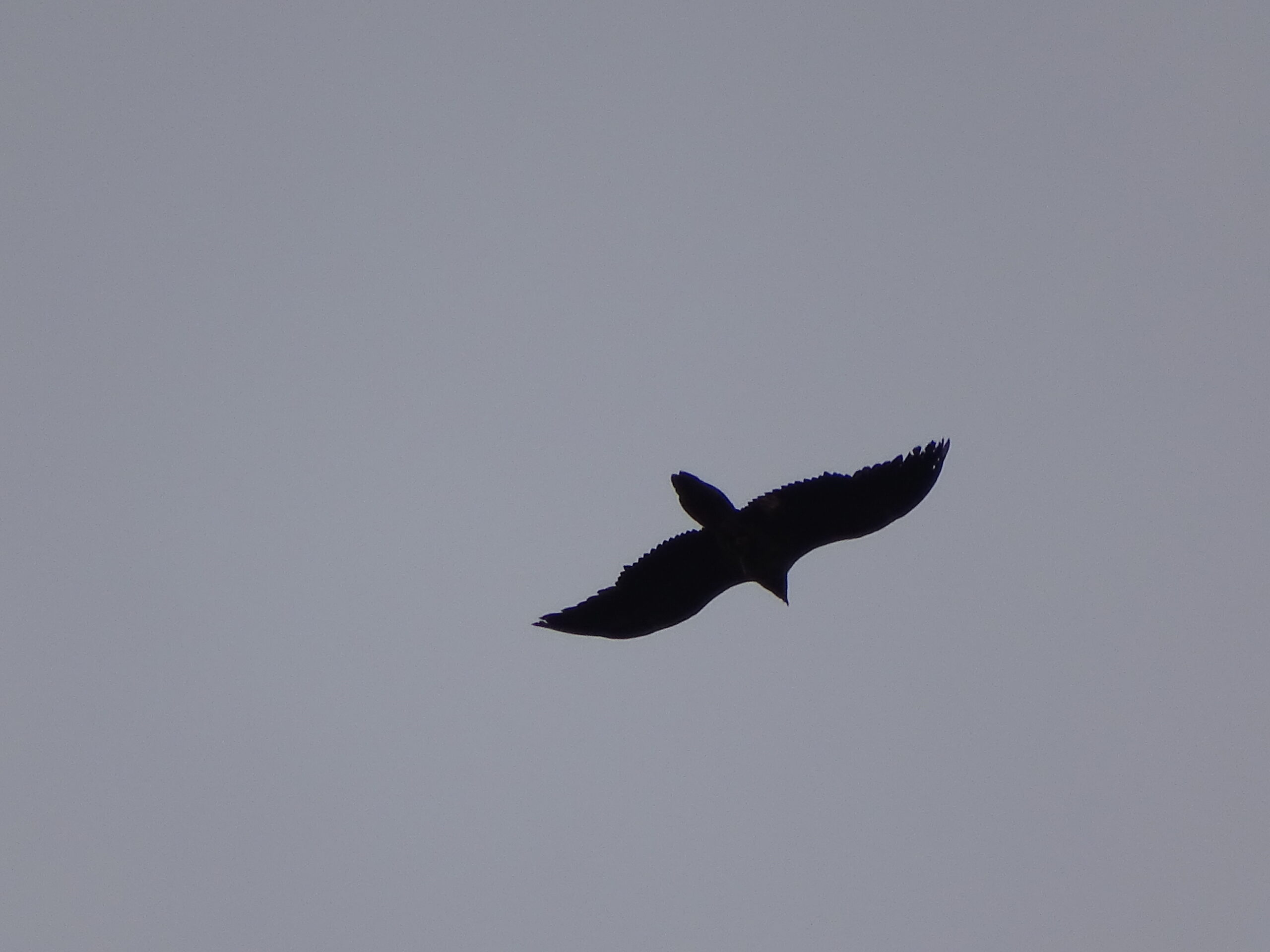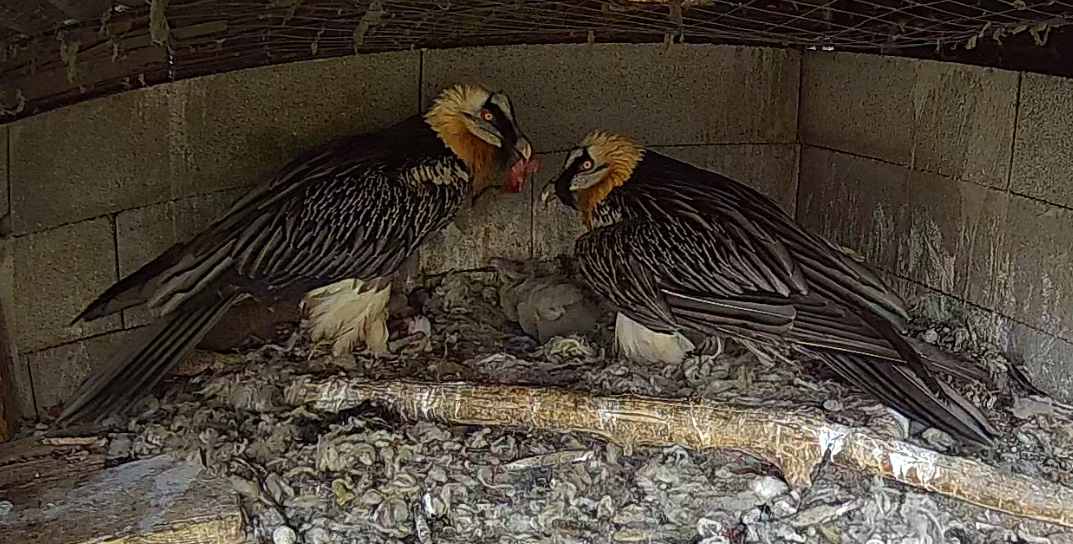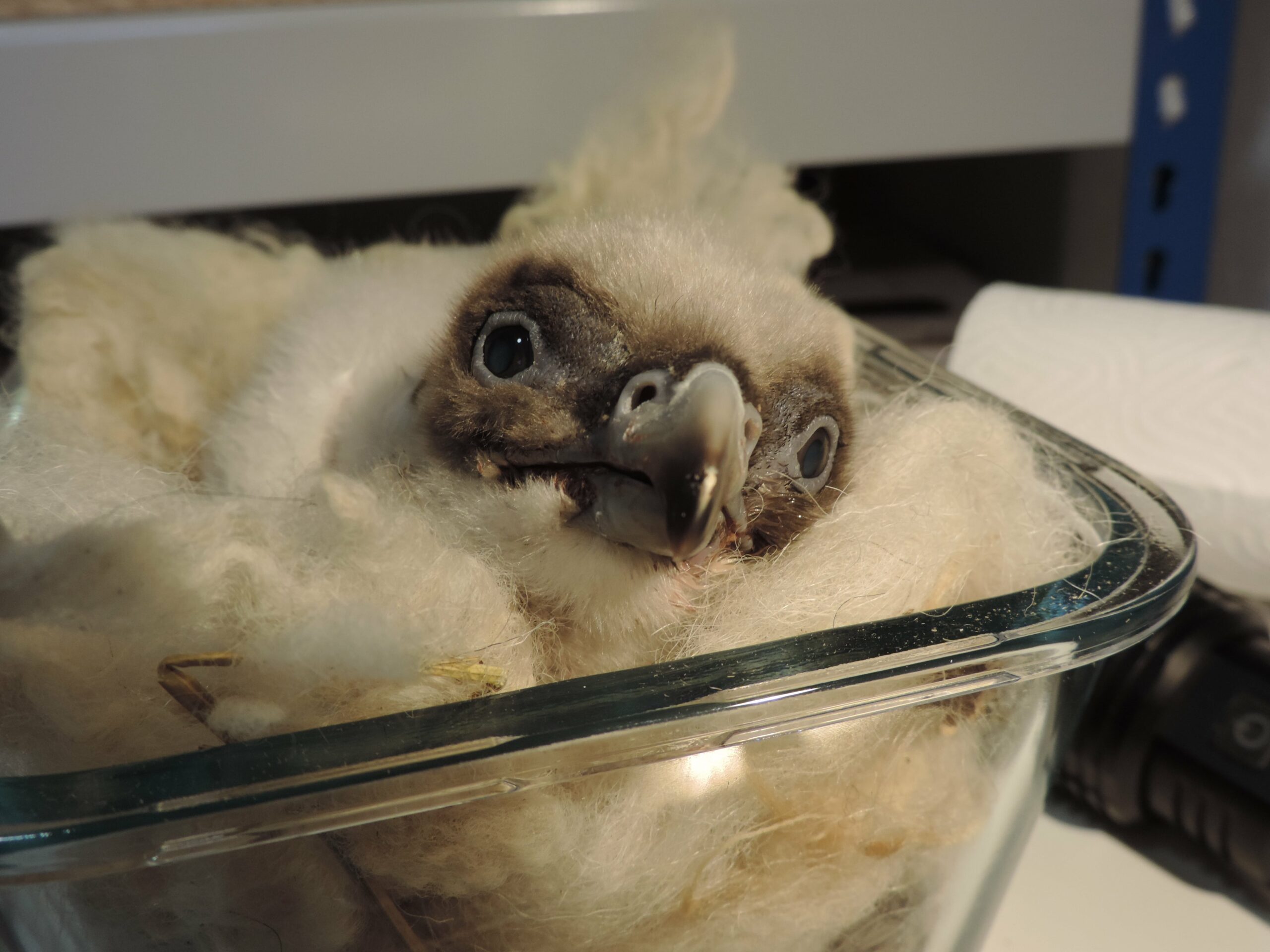This year the results from captive breeding bearded vultures are very good – so far 25 chicks are surviving across the several specialized captive breeding centres, zoos and animal parks that form this network, coordinated by the VCF, and established under the auspices of the EAZA (European Association of Zoos and Aquaria).
Last year the breeding season was extremely poor: 37 bearded vulture pairs in the EEP laid a total of 56 eggs, but these resulted in only 13 surviving juveniles, 7 raised in the specialized captive breeding centres, and 6 in Zoos. Of these 13 young, 9 were released in the 3 on-going reintroduction projects (Alps, Grands Causses & Andalucia), and 4 were added to the breeding network.
But this year could be a record breeding season! Our best season ever was in 1999 when 25 fledglings were produced. This year there are still 3 eggs to hatch, and we know that at least two of them are fertile and alive! One of the last birds to hatch was in the Torreferrusa center, in Catalonia, Spain (see photo).
The big number of young produced this year means that we will be able to release good numbers in nature in all the reintroduction projects (Alps-Grands Causses-Andalucia), while keeping back some males for captive breeding – there is currently a surplus of 11 females in the breeding network.
This year´s breeding season has been characterized by a very long -four months – laying period: the 1st egg was laid on the 6th of December while the last one on the 7th of March, at the time the first young were hatching! In general, birds also hatched 1-3 days earlier than expected this year
The bearded vulture captive breeding network is a fantastic collaborative effort between many people and organisations – and is at the base of the successful reintroduction projects that are restoring the populations of this species across its former range. The VCF coordinates the whole process, providing technical support, transporting birds across the network, trying to maximise the establishment of new pairs, improving the husbandry, and reducing mortality, and improving breeding productivity.
The VCF would like to thank all the many tens of dedicated individuals who are watching and caring, night and day, for these wonderful vultures, with the hope that at least some of them will soon fly high above on the European skies.



